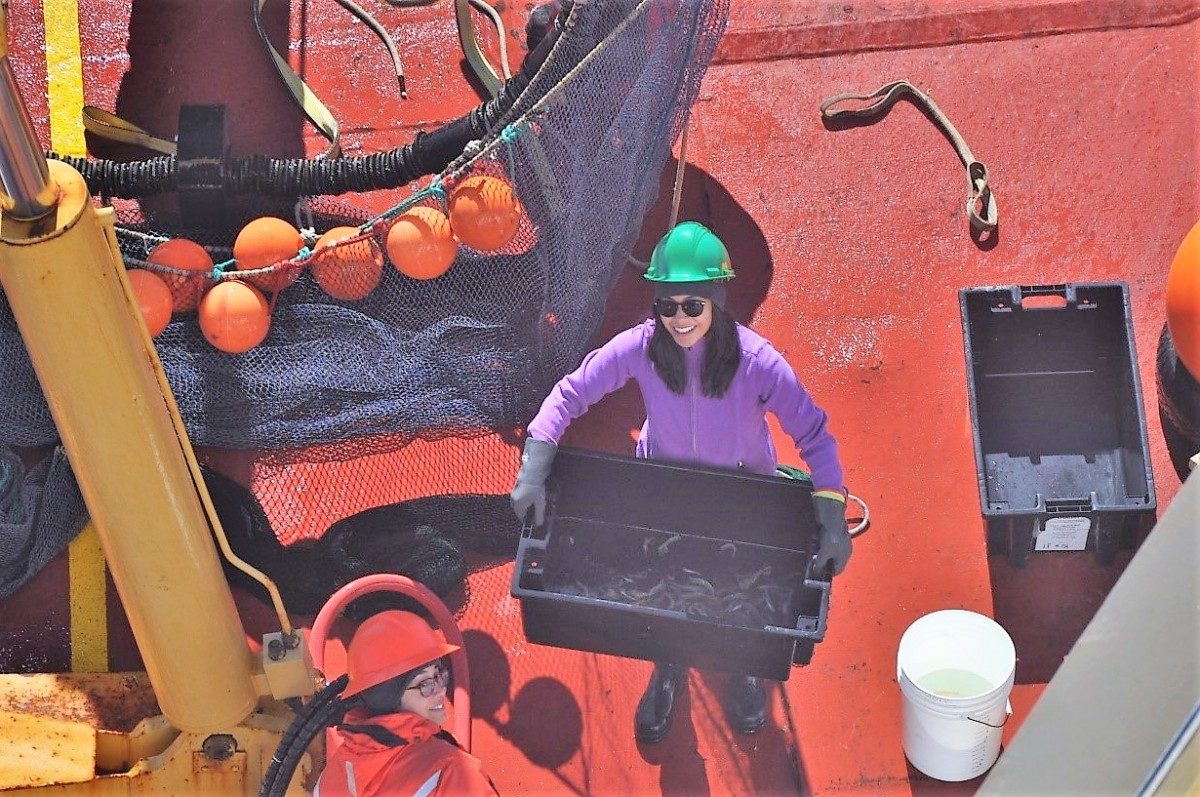
Ainsleigh on board the CCGS Amundsen with samples // Photo submitted by Dr. P Chaudhuri
Mercury in the food web: Sampling on board the CCGS Amundsen
“I’m going to collect sea bugs” is what I’ve been telling my friends and family for the past few years before heading north. This is my third consecutive summer on board the CCGS Amundsen where I’ll be collecting biological samples for contaminants analysis as part of the BaySys project. More accurately, I’m going to be collecting Arctic zooplankton. The word zooplankton is derived from Greek meaning animal drifter. It is used to describe little critters that drift with the currents of the ocean. Zooplankton are an important component to the food web, and they consist mainly of small animals (e.g. cnidarians, crustaceans, chaetognaths, etc.) and immature stages of larger animals (e.g. fish larvae and juvenile).
The sampling process on board is pretty straight forward. We have two main nets that we use to catch the zooplankton: the Tucker, which is dragged alongside the icebreaker while moving slowly, and the Monster, which is basically dunked straight down into the water and is then pulled back up towards the surface. There’s twist off bottles at the end of the net where the zooplankton are collected. I have a nice Coleman water jug nearby into which I transfer the sample in order to keep them cool, then I bring it to the laboratory on-board the icebreaker. Next, I pour the sample into a large pan to sort the bugs one by one, and by species, using tweezers. They then go into labelled vials and are stored in the freezer until we bring them back to the university, where we conduct the mercury analysis.
Mercury is toxic in its organic form – methylmercury, which bioaccumulates in biological tissue and biomagnifies up the food web. That is to say that methylmercury tends to stay in one’s system and for that reason, predators accumulate the mercury burden of their prey. As a result, top predators tend to have elevated levels of mercury. This is a huge health concern for humans, particularly for the Northerners who consume top predator species (e.g. beluga) as a regular part of their diet. For this reason, we collect zooplankton to probe the processes which are thought to drive mercury levels in top predators. Also, since zooplankton are considered prey to higher trophic level species, they are much more abundant, easier to collect and of course it is less evasive to collect them, as opposed to the predators.
My favourite part about working on board is being able to work alongside experts from a number of different disciplines. My group’s work alone is only one piece of the puzzle, but together we generate a picture from which we can deepen our understanding of the Arctic environment and its functioning. Thank you to Manitoba Hydro who helped fund the BaySys project and to the Captain and crew of the CCGS Amundsen.






